|
The Show

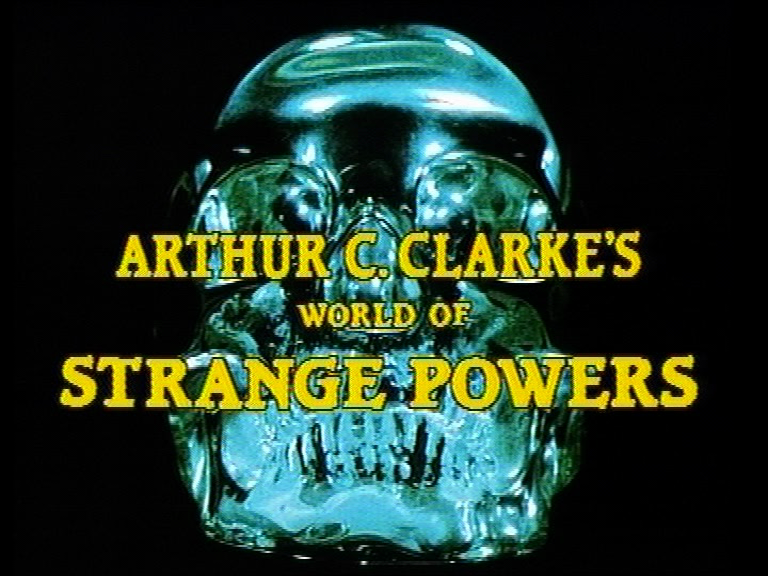 Arthur C Clarke’s World of Strange Powers (YTV, 1985) Arthur C Clarke’s World of Strange Powers (YTV, 1985)
Feeling very much like a televisual version of the Fortean Times, the Yorkshire Television productions Arthur C Clarke’s Mysterious World (1980) and its follow-up series Arthur C Clarke’s World of Strange Powers (1985) make for interesting comparison with the spate of paranormal-themed programmes that seem to have become popular since the early 2000s – many of which adopt either a One Step Beyond-style re-enactment based approach (for example, the US series A Haunting; New Dominion Pictures, 2005- ) or take their cue from ‘ghost-hunting’ shows such as the groundbreaking Ghosthunters (INCA, 1996), which established a template followed slavishly by subsequent series like Most Haunted (Antix Productions, 2002- ) or the US equivalents, Ghost Adventures (MY Tupelo Entertainment, 2008- ) and Ghost Hunters (Pilgrim Films & Television, 2004- ). The broadcast of both Mysterious World and Strange Powers were accompanied by the publication of two fascinating books, written by Simon Welfare and John Fairley (the show’s producers), covering the mysteries depicted within the series. (Both series were followed up by Arthur C Clarke’s Mysterious Universe in 1994.)
In their approach, both Mysterious World and Strange Powers took their cue from the Leonard Nimoy-narrated US programme In Search Of… (Alan Landsburg Productions, 1976-82), which each week focused on a different phenomenon. Later programmes in this vein have tended to focus on ghosts and hauntings - for example, the aforementioned Most Haunted et al, but also shows such as Haunted Lives: True Ghost Stories (Four Point Entertainment, 1991), which balanced re-enactments with interviews with the participants, establishing yet another formula which is still exploited to this day. By contrast, like In Search Of…, alongside a discussion of hauntings Mysterious World and Strange Powers offered a more skeptical, Fortean examination of such topics as cryptozoology and ufology. Where Mysterious World tended to focus on large-scale mysteries and phenomenon (such as the Easter Island statues, the existence of giant squid, bigfoot and yeti, and crop circles), the stories in Strange Powers seem more intimate.
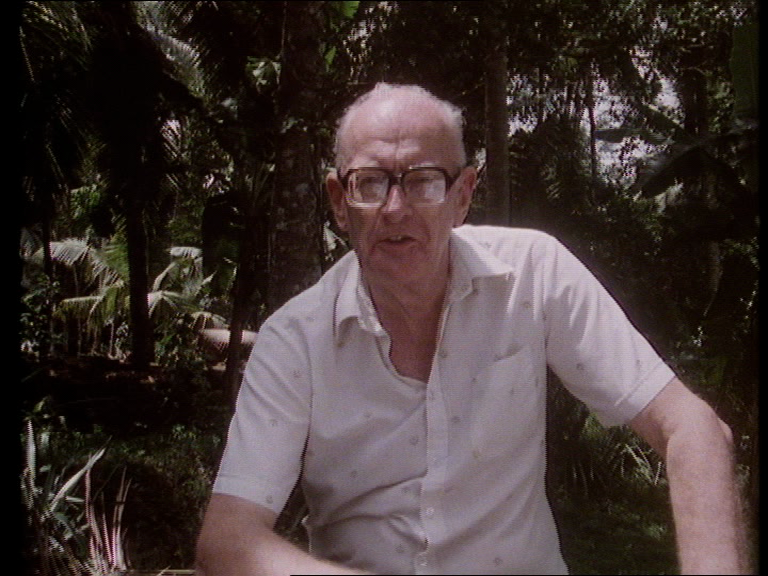 The influence of Charles Fort’s work shines through the episodes, and Clarke has admitted that Fort ‘undoubtedly helped to inspire’ both Mysterious World and Strange Powers (Clarke, 1990b: np). Clarke’s series offer a balanced approach to the paranormal phenomenon discussed within them. Particularly noticeable in Strange Powers is the structure of these episodes, in which during the first half of each programme paranormal phenomenon are described ‘as is’ through interviews with those who have experienced it, and in the second half of each programme some attempt at balance is struck through attempts to explain these events scientifically. This approach reflects the skepticism of the series’ guiding voice, that of Arthur C Clarke, who was himself deeply skeptical of the paranormal. Clarke claimed that during the 1950s, he was open to the possibility of the existence of the paranormal, but ‘[f]our decades later, after spending millions of Yorkshire Television’s money researching my Mysterious World and Strange Powers programmes, I am an almost total sceptic. I had seen far too many claims dissolve into thin air, far too many demonstrations exposed as fakes’ (Clarke, 1990a: vi). The influence of Charles Fort’s work shines through the episodes, and Clarke has admitted that Fort ‘undoubtedly helped to inspire’ both Mysterious World and Strange Powers (Clarke, 1990b: np). Clarke’s series offer a balanced approach to the paranormal phenomenon discussed within them. Particularly noticeable in Strange Powers is the structure of these episodes, in which during the first half of each programme paranormal phenomenon are described ‘as is’ through interviews with those who have experienced it, and in the second half of each programme some attempt at balance is struck through attempts to explain these events scientifically. This approach reflects the skepticism of the series’ guiding voice, that of Arthur C Clarke, who was himself deeply skeptical of the paranormal. Clarke claimed that during the 1950s, he was open to the possibility of the existence of the paranormal, but ‘[f]our decades later, after spending millions of Yorkshire Television’s money researching my Mysterious World and Strange Powers programmes, I am an almost total sceptic. I had seen far too many claims dissolve into thin air, far too many demonstrations exposed as fakes’ (Clarke, 1990a: vi).
In fact, a brilliant sketch in a 1982 episode (‘Big Foot’) of The Goodies (BBC, 1970-80; LWT, 1981-2) parodies Clarke’s profoundly skeptical approach to the paranormal. The episode features Bill Oddie and Tim Brooke-Tayor watching a broadcast Mysterious World eagerly whilst the narrator introduces it (‘strange monsters, unexplained things in the sky, bizarre happenings, out-of-focus photographs’). Clarke (played by Graeme Garden) is introduced as ‘writer and inventor of the digital lawnmower’; Clarke debunks the discovery of a tin can which has been claimed to be part of an alien spacecraft, before asserting that ‘my belief is that this and other such finds are like most of the strange stories on this programme, just a load of old rubbish’. As Clarke continues to express skepticism to the suggestion that extraterrestrial life has visited the planet, in the background we see an alien spacecraft land; he suggests that the Loch Ness monster is a rhinoceros floating upside down ‘with a French loaf in his mouth balancing a tortoise’, as Nessie herself looms in the background and peers over his shoulder. The sketch ends with Clarke asserting that ‘the only real mystery is why they pay me a lot of money to stand here and tell you that I don’t believe in any of it’, and an announcer tells the viewers that ‘this programme has been the last in the series. Next week’s programme has been cancelled, as it has just been discovered that Arthur C Clarke does not exist.
 Where Mysterious World had been narrated by Gordon Honeycomb, Strange Powers has instead narration by Anna Ford. Each episode, with a packed running time of just under thirty minutes, begins with Anna Ford narrating over shots of Clarke on a sunny beach in Sri Lanka, a parasol at his back. Ford tells us that we are about to watch ‘Mysteries from the files of Arthur C Clarke; scientist, writer and visionary. The scientist who invented the communications satellite, the writer of 2010, and now, in retirement in Sri Lanka the visionary who ponders the mysteries of this and other worlds’. The episode then usually begins with Clarke telling the audience a relevant tale from Sri Lanka before Ford narrates over a series of similar tales from around the world; these events are presented to us via eyewitness testimony and, sometimes, archival news footage. For example, episode five (‘Ghosts, Apparitions and Haunted Houses’) begins with Clarke presenting a story about a location in Galle, Sri Lanka (‘everyone loves a good ghost story, but to many people they’re more than fiction’), which is followed by stories about hauntings from Chicago, Illinois (Resurrection Mary, the Italian Bride); the alleged haunting of the house in Oklawaha, Florida, in which Ma Barker and her boys were killed by the FBI; and York, where a spectral Roman legion is said to pass through the cellar of Treasurer’s House. Where Mysterious World had been narrated by Gordon Honeycomb, Strange Powers has instead narration by Anna Ford. Each episode, with a packed running time of just under thirty minutes, begins with Anna Ford narrating over shots of Clarke on a sunny beach in Sri Lanka, a parasol at his back. Ford tells us that we are about to watch ‘Mysteries from the files of Arthur C Clarke; scientist, writer and visionary. The scientist who invented the communications satellite, the writer of 2010, and now, in retirement in Sri Lanka the visionary who ponders the mysteries of this and other worlds’. The episode then usually begins with Clarke telling the audience a relevant tale from Sri Lanka before Ford narrates over a series of similar tales from around the world; these events are presented to us via eyewitness testimony and, sometimes, archival news footage. For example, episode five (‘Ghosts, Apparitions and Haunted Houses’) begins with Clarke presenting a story about a location in Galle, Sri Lanka (‘everyone loves a good ghost story, but to many people they’re more than fiction’), which is followed by stories about hauntings from Chicago, Illinois (Resurrection Mary, the Italian Bride); the alleged haunting of the house in Oklawaha, Florida, in which Ma Barker and her boys were killed by the FBI; and York, where a spectral Roman legion is said to pass through the cellar of Treasurer’s House.
Following a few of these case studies, around the ad break, Clarke offers an explanation for the phenomenon discussed in the episode. (In episode five, focusing on ghosts, Clarke talks about the ‘stone tape’ theory and the concept that events can leave imprints on structures that can be ‘replayed’ like audio or video recordings.) Finally, in the second half of the programme a number of other case studies are presented for the audience, with the phenomena within some of these being explained away scientifically: for example, in episode five, the story of a spectral motorcyclist on Highway 60, Wisconsin, is explained as being the product of fumes of ether leaking from a broken bottle in the backseat of the car that was carrying the witnesses; reports of the sounds of phantom animals at the site of the crash of a circus train in Riverside, Illinois, during the 1930s are explained as simply being the sounds of animals in a local zoo being carried a certain distance by specific atmospheric conditions. These ‘explained’ phenomena are then counterbalanced by two or three further case studies which remain unexplained: in the ghosts episode, these final case studies take the form of a ghost of a miner seen in Silverwood Colliery, South Yorkshire; the story of a carpet fitter in Stanbridge, Bedfordshire, who claims to have picked up a phantom hitchhiker; and the story of a hooded man who has been seen in the Nunsthorpe council estate in Grimsby, South Humberside. (The latter I have a personal connection to, as I have researched a number of similar ‘hauntings’ on the Nunsthorpe estate as part of an ongoing photographic project, and my father and I have both – at similar points in our respective lives – encountered houses on that estate that have been said to be ‘haunted’ by similar entities.)
 Each episode concludes with Clarke asserting his position of skepticism. In the episode focusing on ghosts, Clarke tells the audience that whilst ‘there’s no doubt that people really do see apparitions’, he himself doesn’t ‘believe that the dead return to live’. Instead, Clarke suggests, these visions may be the product of a feedback loop between the brain and the eye, with the brain affecting perception and sending signals to the eye, or confusing the signal received by the eye. However, as Clarke questions at the end of this episode, ‘Do we really want to know the mundane truth?’ What’s notable is that the skepticism presented by Clarke towards the issues within the episode is presented very respectfully: the witnesses of the paranormal are not ridiculed or mocked. Each episode concludes with Clarke asserting his position of skepticism. In the episode focusing on ghosts, Clarke tells the audience that whilst ‘there’s no doubt that people really do see apparitions’, he himself doesn’t ‘believe that the dead return to live’. Instead, Clarke suggests, these visions may be the product of a feedback loop between the brain and the eye, with the brain affecting perception and sending signals to the eye, or confusing the signal received by the eye. However, as Clarke questions at the end of this episode, ‘Do we really want to know the mundane truth?’ What’s notable is that the skepticism presented by Clarke towards the issues within the episode is presented very respectfully: the witnesses of the paranormal are not ridiculed or mocked.
Disc contents:
DISC ONE:
1. ‘Warnings from the Future’ (26:15)
2. ‘Things That Go Bump in the Night’ (26:05)
3. ‘Mind to Mind’ (26:12)
4. ‘Stigmata: The Wounds of Christ?’ (26:14)
5. ‘Ghosts, Apparitions and Haunted Houses’ (26:06)
6. ‘Fairies, Phantoms and Fantastic Photographs’ (26:13)
DISC TWO:
7. ‘Have We Lived Before?’ (26:13)
8. ‘An Element of the Divine’ (26:13)
9. ‘Walking on Fire’ (26:12)
10. ‘Messages from the Dead’ (26:14)
11. ‘Roots of Evil’ (26:15)
12. ‘Metal-Bending, Magic and Mind Over Matter’ (26:16)
13. ‘Strange Powers – The Verdict’ (26:09)
Video
The episodes are presented in their original broadcast screen ratio of 1.33:1. The episodes seem to be shot on 16mm film but appear to have been edited on videotape (with video-generated titles) and thus have a ‘crushed’ appearance. Taking this into account, the series looks fine on this DVD presentation; there’s a little bit of what seems to be tape damage here and there but nothing too detrimental.
 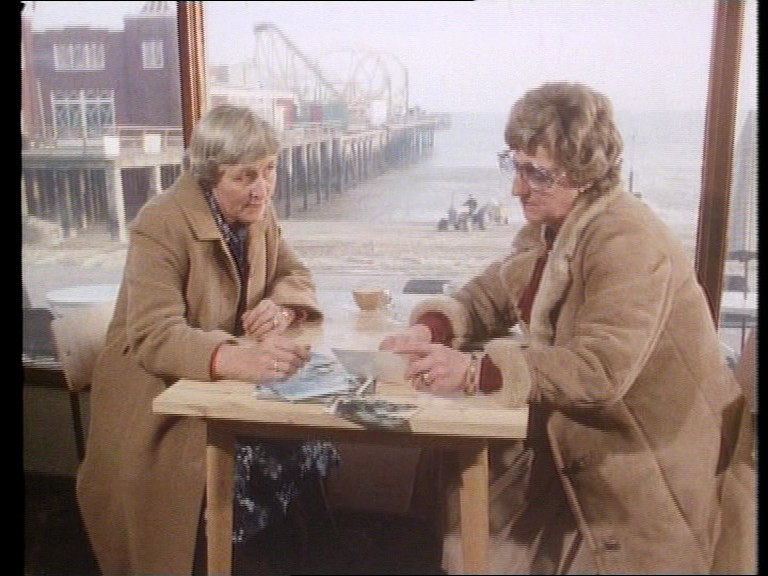 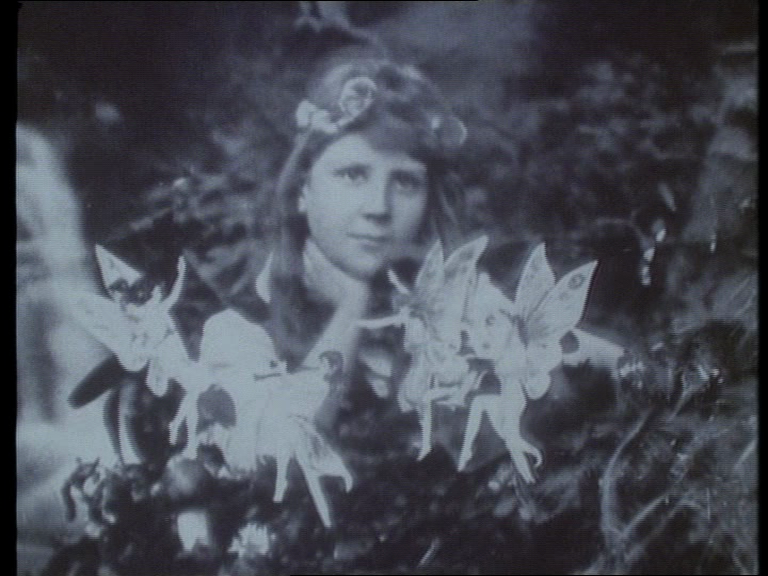
Audio
Audio is presented via a two-channel Dolby Digital mono track. This is a little muddy at times but is clear throughout. Sadly, there are no subtitles.
Extras
None.
Overall
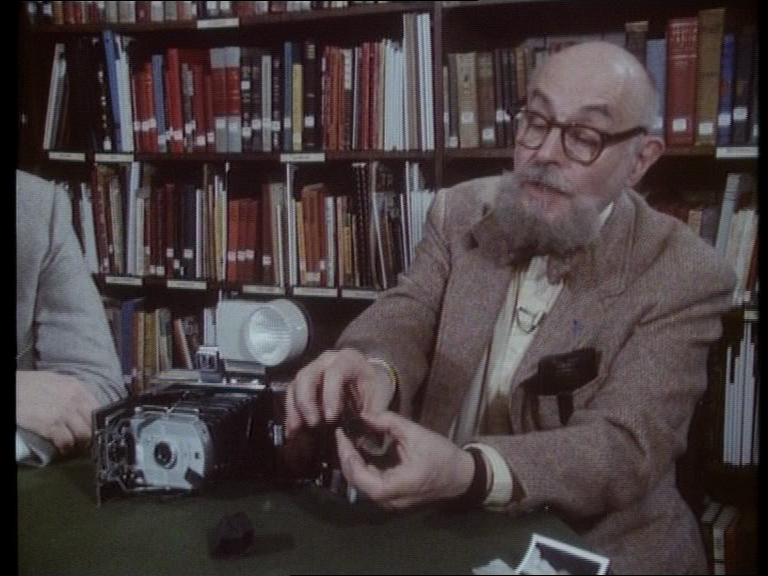 Arthur C Clarke’s World of Strange Powers is an interesting series, definitely rewarding to watch. Some of the stories here have been forgotten; others have been explained, whilst yet others (such as the mysterious throwing of stones at houses in Ward End, Birmingham) have never been resolved. The series offers a sensitive, not exploitative, approach to the phenomena examined within it, and the comments made by eyewitnesses are balanced with the skepticism of Clarke himself. Certainly, fans of programmes about the supernatural and unexplained phenomena will find much to enjoy here. Arthur C Clarke’s World of Strange Powers is an interesting series, definitely rewarding to watch. Some of the stories here have been forgotten; others have been explained, whilst yet others (such as the mysterious throwing of stones at houses in Ward End, Birmingham) have never been resolved. The series offers a sensitive, not exploitative, approach to the phenomena examined within it, and the comments made by eyewitnesses are balanced with the skepticism of Clarke himself. Certainly, fans of programmes about the supernatural and unexplained phenomena will find much to enjoy here.
References:
Clarke, Arthur C., 1990a: ‘Introduction’. In: Clarke, Arthur C, 2010: Childhood’s End. London: Pan Macmillan
Clarke, Arthur C, 1990b: Astounding Days: A Science Fictional Autobiography. London: Bantam
|


